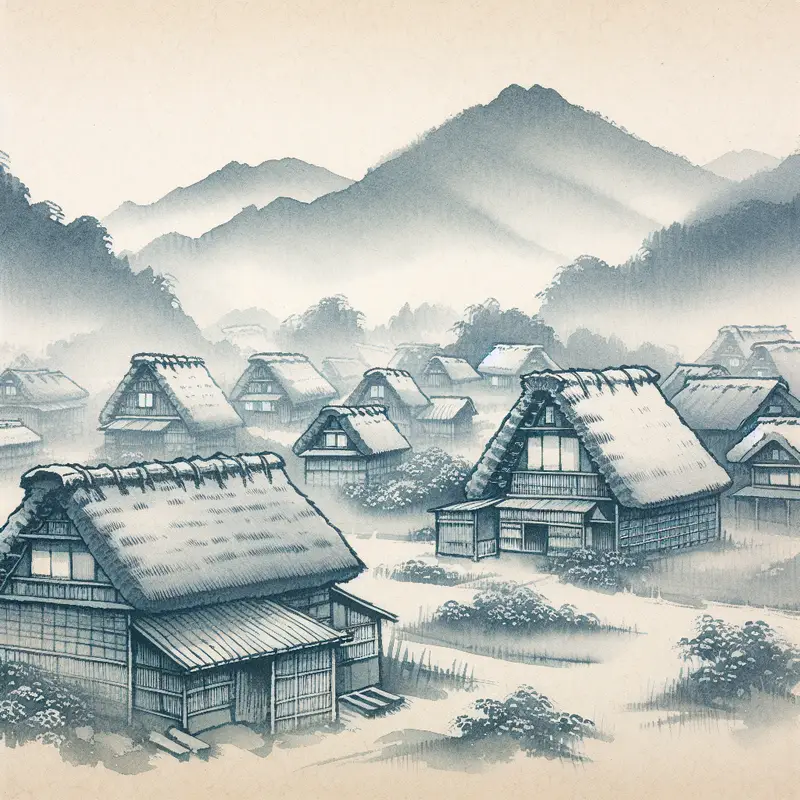Mochitsuki and the Collective Spirit of Japan
Published on March 01, 2025

I recently had the pleasure of attending my first-ever mochitsuki event, organized by my daughter’s preschool in central Hokkaido. Mochitsuki, the traditional Japanese rice-pounding ceremony, was something I'd heard about but had yet to experience firsthand. What unfolded was a beautifully chaotic scene—a joyful blend of laughter, excitement, and gentle coordination involving adults, children, and the communal rhythm of tradition.
Throughout the ceremony, every child and adult received enthusiastic cheers and applause—not just for successfully pounding the rice but simply for participating. This constant, warm encouragement turned what could have been routine tasks into meaningful experiences, creating a welcoming atmosphere that invited everyone’s active involvement.
Step-by-Step: From Rice to Mochi
The centerpiece of mochitsuki involves the preparation of mochi—sticky, glutinous rice cakes. It starts simply: cooking sticky rice until soft and steaming. The hot rice is carefully scooped from large cooking pots into a sturdy stone mortar (usu) using a wooden rice paddle. Once in place, the real fun begins.
Children gather around eagerly, clutching smaller wooden mallets (kine) with eyes wide and ready. Each child, cheered on by an enthusiastic crowd, takes turns pounding the rice, turning it slowly from grain into dough. Between each swing, someone skillfully flips and folds the rice, ensuring an even consistency. Eventually, adults join the ritual, continuing until the rice transforms into a perfectly smooth, gelatinous mass.
When ready, the women quickly split the mochi into kid-sized portions, serving them on skewers and in small bowls, as smiles erupt across faces. Meanwhile, the men face a different collaborative challenge: moving the heavy mortar—nearly 50 kg (120 lbs)—out of the building. Working together, they carefully roll it across bamboo mats, protecting the floor from damage. Cleanup follows naturally, everyone participating to leave the space just as they found it.
My Faux-Pas: Cultural Lessons in Real-Time
Too Strong, Too Soon
Caught up in the excitement—and admittedly, my eagerness to demonstrate strength—I struck the mochi with perhaps a bit too much enthusiasm. Given that I'm larger than the average Japanese participant, my heavy swing splashed rice around the mortar. The crowd initially cheered the display of strength but gently reminded me, "Take it easy," and "Slowly, pace yourself."
It was a subtle yet impactful lesson. Mochitsuki isn't about showcasing individual prowess; it's a collective effort designed to involve everyone. Patience and consideration are paramount.
The Lone Hero (Almost)
My second faux-pas came when it was time to move the mortar. Again, mistakenly thinking of efficiency (and admittedly keen to impress), I attempted to lift the heavy mortar alone. This time, rather than cheers, I was met with cautious warnings: "Careful, careful, careful!" and "That's too much." Realizing the message, I quickly placed the mortar back down and joined the others in gently rolling it outside together.
These experiences were humbling. What initially seemed harmless personal displays of strength clashed gently but meaningfully with the values embedded in mochitsuki.
Individualism vs. Collectivism: Cultural Insights
My Canadian upbringing emphasized individual achievement, celebrating exceptional talent and feats of strength or intelligence. Japan, by contrast, prioritizes collective harmony, group participation, and shared achievement. It's not that individual accomplishments aren't recognized—they certainly are—but the threshold of notability is higher, more carefully balanced against group cohesion.
Why Mochitsuki Embodies Collective Values
- Pounding mochi takes time: This ensures participation from everyone, young and old. It's not a task meant for speed or individual performance, but shared effort.
- The heavy mortar requires cooperation: The mortar is intentionally too cumbersome for one person, necessitating teamwork and careful coordination.
- Shared rewards: Once the task is completed, the collective enjoys the fruits of their labor together, reinforcing a sense of community accomplishment.
- Leaving spaces as found: Cleaning up collectively reinforces respect, responsibility, and communal pride.
- Expressing gratitude: Crucially, everyone's effort, large or small, is sincerely acknowledged. Participants are thanked individually during and well after the event, underscoring genuine appreciation. This regular reinforcement gives the ceremony deeper meaning, ensuring no one’s effort is taken for granted and encouraging ongoing participation.
More than the Sum of Its Parts
What became clear to me, after reflecting on my experiences, was that mochitsuki offers a profound metaphor for Japanese cultural ideals. The community acting in harmony achieves outcomes far beyond what isolated individual efforts might produce. It's not just about the rice cakes or the festive atmosphere—it's about how humans interact meaningfully, celebrating cooperation, patience, humility, and mutual respect.
Adjusting My Perspective
As an international resident in Japan, this experience served as a gentle reminder to be more observant and considerate. There is deep wisdom in moderating individual displays to prioritize group harmony. Recognizing this allowed me to appreciate the subtle beauty and strength in collective endeavors. Mochitsuki provided a practical lesson in humility, patience, and communal effort—values increasingly precious in a rapidly individualistic world.
In the days following mochitsuki, I was touched by how community members continued to express their thanks when we crossed paths around town—"Thanks again for your hard work," they'd say. This ongoing display of gratitude underscored the event’s significance beyond mere festivity, reinforcing to me how deeply the community values and remembers each individual’s contributions.
Appreciating a Culture of Collaboration
Mochitsuki isn't simply a delightful cultural event; it encapsulates the very essence of Japan’s collective spirit. In a quiet, unassuming way, it teaches both adults and children that true strength comes from togetherness, patience, shared purpose, and sincere appreciation. These are lessons worth holding onto, no matter where you’re from.